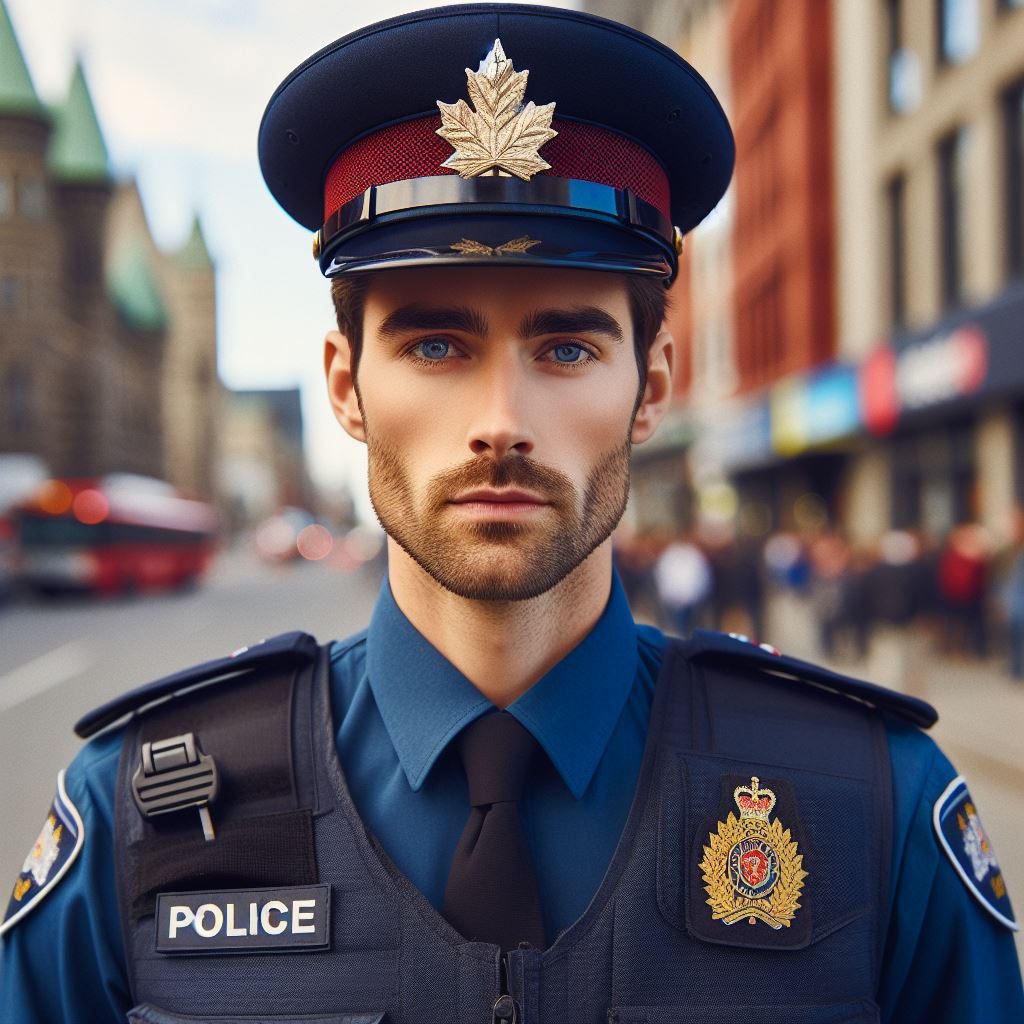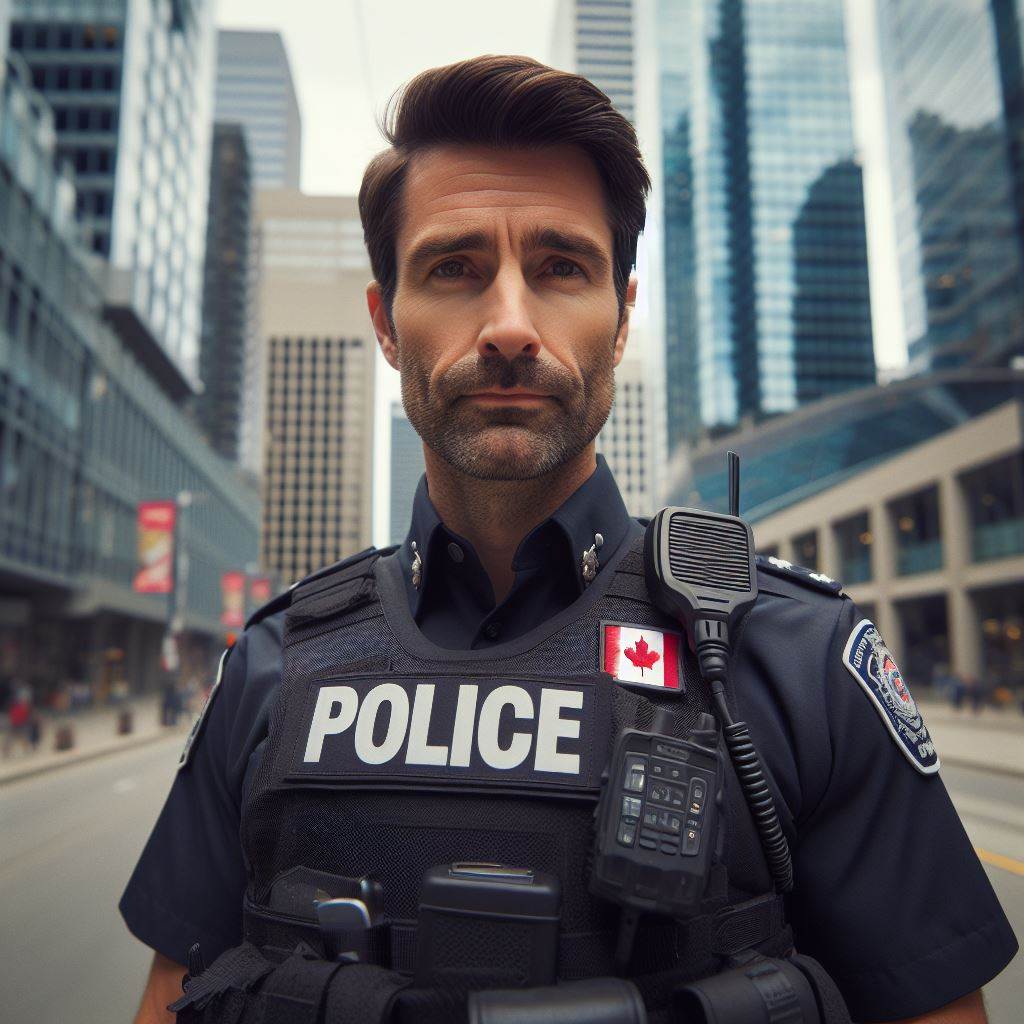Introduction
In the vast tapestry of law enforcement history, the evolution of Canadian police uniforms weaves a compelling narrative.
A. Importance of Police Uniforms
- Uniforms symbolize authority, fostering public trust and cohesion.
- Historical shifts in design reflect societal changes and technological advancements.
- Uniforms serve as a visual representation of a nation’s commitment to public safety.
C. Thesis Statement
Exploring the transformation of Canadian police uniforms unveils not only a sartorial journey but also a reflection of evolving law enforcement ideologies and societal norms.
From the iconic red serge of the Royal Mounted Police to contemporary tactical gear, these uniforms encapsulate the dynamic interplay between tradition and modernity in the Canadian policing landscape.
Early Canadian Policing Era (1800s-1900s)
A. Introduction to the beginnings of Canadian policing
The early days of Canadian policing were marked by a need for law and order.
Crime rates were soaring, and the population was growing rapidly, creating a demand for a more organized system of law enforcement.
B. Description of early police uniforms
1. Materials and colors used
Early Canadian police uniforms were typically made from wool, providing warmth and durability for the officers.
The colors used in the uniforms varied among different regions, but most often consisted of shades of blue or black.
2. Key features and elements
The early police uniforms featured a double-breasted tunic, adorned with large brass buttons and a high collar.
The tunics were designed to convey authority, with their military-inspired style and tailored fit.
3. Influence from British policing uniforms
The early Canadian police uniforms were heavily influenced by the British policing system, as Canada was still a British colony.
The British-style uniforms were seen as a symbol of professionalism and order, and the Canadian police sought to emulate this image.
The uniforms included accessories such as high leather boots, gloves, and a distinctive police hat bearing a badge.
In essence, the early Canadian policing era saw the development of distinctive uniforms that reflected authority and professionalism.
These uniforms were made from wool, featured a double-breasted tunic with brass buttons, and were influenced by British police uniforms.
The early police uniforms served as a visual representation of the growing system of law enforcement in Canada.
Read: Fitness Standards for Canadian Police Officers
Transition Period (1900s-1950s)
A. Changes in policing methods and responsibilities
During the transition period, the Canadian police witnessed significant changes in their methods and responsibilities.
The focus shifted from mere crime suppression to community-oriented policing.
New methods, such as fingerprint analysis and scientific investigation techniques, began to gain importance.
Police departments also took on additional responsibilities, including traffic regulation, controlling public gatherings, and child protection.
The transition period marked a shift towards a more service-oriented approach.
B. Introduction of new technologies and equipment
Advancements in technology greatly influenced the Canadian police force during the transition period.
The introduction of police radios revolutionized communication, allowing for faster response times.
The use of fingerprinting machines and forensic equipment enabled more accurate crime analysis.
Motorized vehicles were gradually introduced, replacing traditional horse-mounted patrols and improving mobility.
Unlock Your Career Potential
Visualize a clear path to success with our tailored Career Consulting service. Personalized insights in just 1-3 days.
Get StartedThese technological advancements significantly enhanced the effectiveness and efficiency of the Canadian police force.
C. Evolution of police uniform design
The transition period also saw significant changes in the design of Canadian police uniforms.
1. Shift from traditional styles to more practical designs
Modern uniforms were designed to allow for greater mobility and functionality in various policing tasks.
2. Incorporation of functional elements
Uniforms were designed with practical features such as multiple pockets for carrying essential equipment.
3. Adaptation to local weather conditions
Police uniforms were tailored to withstand extreme weather conditions, ensuring the comfort of officers during duty.
Overall, the transition period marked a crucial evolution in Canadian policing, transforming it into a more modern and effective institution.
The changes in policing methods and responsibilities allowed for a more proactive approach in maintaining law and order.
The introduction of new technologies and equipment significantly enhanced the capabilities of the police force.
The evolution of police uniform design reflected the changing needs and practical requirements of modern policing.
The transition period laid the foundation for the development of contemporary Canadian policing and paved the way for further advancements in the future.
Modern Era (1960s-present)
A. Shift towards community-oriented policing
In the 1960s, Canadian police began adopting a community-oriented approach to policing.
This shift focused on building relationships and collaboration with local communities.
Officers aimed to address community needs and concerns, promoting a safer environment for all.
B. Introduction of standardized uniform guidelines
To enhance professionalism and public perception, standardized uniform guidelines were introduced.
National police agencies played a key role in establishing these guidelines across the country.
The importance of a professional appearance and its impact on public trust became evident.
1. National police agencies playing a role
National police agencies took the lead in establishing uniform guidelines for all officers.
This ensured consistency and a unified image of law enforcement across different regions.
Uniforms became an emblem of authority and professionalism in the eyes of the public.
2. Importance of professionalism and public perception
The introduction of standardized uniform guidelines emphasized professionalism and accountability.
Uniforms became a symbol of authority and reminded officers of their responsibilities.
A positive public perception of the police was crucial in fostering cooperation and community support.
C. Introduction of specialized units and their respective uniforms
As policing needs evolved, specialized units were introduced, each with their distinct uniforms.
These units specialized in areas such as tactical response, K-9 units, and traffic enforcement.
Their uniforms were designed to reflect their unique roles and enhance their operational effectiveness.
1. Tactical response teams
Tactical response teams were formed to handle high-risk situations, such as hostage rescues and armed confrontations.
Their specialized uniforms included body armor, helmets, and equipment to ensure officer safety.
These uniforms signaled the presence of a well-trained, highly capable force to the public.
2. K-9 units
K-9 units were established to assist in search and rescue missions, tracking suspects, and drug detection.
Their uniforms consisted of handlers wearing specialized tactical vests and identification patches.
These uniforms visually represented the bond between the officer and their canine partner.
3. Traffic enforcement officers
Traffic enforcement officers played a crucial role in maintaining road safety and traffic management.
Their uniforms included high-visibility vests, reflective gear, and specialized headgear.
These uniforms ensured their visibility and signaled their authority in enforcing traffic laws.
In short, the modern era of Canadian police uniforms witnessed a shift towards community-oriented policing and the introduction of standardized uniform guidelines.
National police agencies played a crucial role in establishing these guidelines and emphasized the importance of professionalism and public perception.
Additionally, the introduction of specialized units brought forth unique uniforms that reflected their respective roles and enhanced their operational effectiveness.
These uniforms became visual symbols of authority, professionalism, and unity within the Canadian police force.
Read: Cultural Sensitivity in Diplomacy: Tips

Noteworthy Canadian Police Uniforms
A. Iconic or historically significant uniforms
- Royal Canadian Mounted Police (RCMP): The iconic red serge uniform worn by the RCMP is instantly recognizable worldwide.
- Provincial and municipal police forces: Each province and municipality in Canada often have their own unique uniforms.
- Unique uniforms for specific events or occasions: Canadian police forces have special uniforms for ceremonies and celebrations.
Throughout history, Canadian police uniforms have evolved and adapted to the changing needs and challenges faced by law enforcement.
Some of these uniforms have become iconic, symbolizing the Canadian police force’s rich heritage and national identity.
In this section, we will highlight some noteworthy Canadian police uniforms that have left a lasting impression.
B. Royal Canadian Mounted Police (RCMP)
The Royal Canadian Mounted Police, commonly known as the RCMP, is perhaps the most recognizable police force in Canada.
Their traditional red serge uniform, known as the “Red Serge,” has become a symbol of Canadian culture.
The Red Serge consists of a scarlet tunic with blue facings, high-strapped black leather riding boots, and a wide-brimmed Stetson hat.
The Northwest Mounted Police, later the RCMP, introduced the first Red Serge uniform in the late 19th century.
Officers patrolling the western frontier intended the uniform to establish a distinctive and authoritative image.
Today, it is still worn on ceremonial occasions, such as the Changing of the Guard on Parliament Hill in Ottawa.
C. Provincial and municipal police forces
In addition to the RCMP, each province and municipality in Canada has its own police force with unique uniforms.
These uniforms often reflect the local identity and history.
For example, the Ontario Provincial Police (OPP) wears a dark blue uniform with yellow/gold insignia, while the Vancouver Police Department in British Columbia wears a dark navy blue uniform.
These uniforms not only serve a practical purpose but also contribute to the sense of community and pride for local law enforcement agencies.
They often incorporate specific symbols or emblems that represent the province or municipality they serve.
D. Unique uniforms for specific events or occasions
Canadian police forces also have special uniforms for specific events or occasions.
For example, during Remembrance Day ceremonies, officers wear a black and red “Poppies Dress” uniform.
A red poppy lapel pin adorns this uniform, symbolizing remembrance for fallen soldiers.
Furthermore, Canadian police officers participate in events such as parades, community festivals, and sporting events.
These occasions allow them to showcase their pride in being part of the community they serve, and they often wear distinctive uniforms that reflect the festive atmosphere.
In fact, Canadian police uniforms go beyond their functional role and hold cultural and historical significance.
The iconic red serge uniform of the RCMP, along with the unique uniforms of provincial and municipal police forces, contribute to the rich tapestry of Canadian law enforcement.
The incorporation of specific uniforms for special events further strengthens the bond between the police and the community they protect.
Read: Career Paths: Beyond the Diplomat Role
Discover More: Federal vs Provincial Public Service Jobs
Current Trends and Innovations
A. Incorporation of modern materials and technologies
In response to evolving needs, Canadian police uniforms have undergone a transformative journey.
Embracing modernity, law enforcement agencies are steering toward cutting-edge designs and materials.
- Lighter and more breathable fabrics: The shift towards advanced textiles has revolutionized the comfort and functionality of police uniforms. Breathable fabrics ensure officers can navigate diverse climates with ease.
- Enhanced safety features: To enhance officer safety, we’ve integrated innovative technologies into uniforms for more effective and secure law enforcement operations.
Reflective materials and built-in communication devices contribute to heightened visibility and improved coordination during operations.
B. Focus on diversity and inclusivity in uniform design
- Gender-neutral uniform options: Recognizing the importance of inclusivity, police uniforms now offer gender-neutral alternatives.
This initiative ensures that every officer, regardless of gender identity, feels acknowledged and supported. - Cultural sensitivity and representation: Embracing Canada’s rich cultural mosaic, modern police uniforms incorporate elements that respect and represent diverse communities.
Symbols and designs reflect cultural sensitivity, fostering positive interactions between officers and the public.
This contemporary approach to police uniform design not only aligns with societal progress but also enhances the overall effectiveness of law enforcement.
The adoption of lighter fabrics and safety technologies empowers officers to perform their duties more efficiently, while a focus on diversity ensures that the uniform represents the diverse population it serves.
Most importantly, the evolution of Canadian police uniforms in the 21st century is marked by a commitment to innovation, comfort, safety, and inclusivity, reflecting the ever-changing landscape of law enforcement in the country.
Conclusion
The evolution of Canadian police uniforms has showcased a remarkable progression.
These uniforms have played a crucial role in shaping the history of policing in Canada.
As we reflect on the changes in police uniforms, it is evident that they symbolize the growth and modernization of law enforcement.
We must recognize the importance of police uniforms in establishing authority, professionalism, and community trust.
Let us appreciate the dedication and commitment of Canadian police officers who wear these uniforms with pride.
As citizens, it is essential to support and respect the men and women who serve and protect our communities.
By understanding the evolution of police uniforms, we gain a deeper appreciation for the sacrifices made by law enforcement.
Let us continue to advocate for the advancement and improvement of police uniforms, ensuring they reflect the values and needs of our society.
Together, we can contribute to creating a safer and more inclusive environment for everyone.




